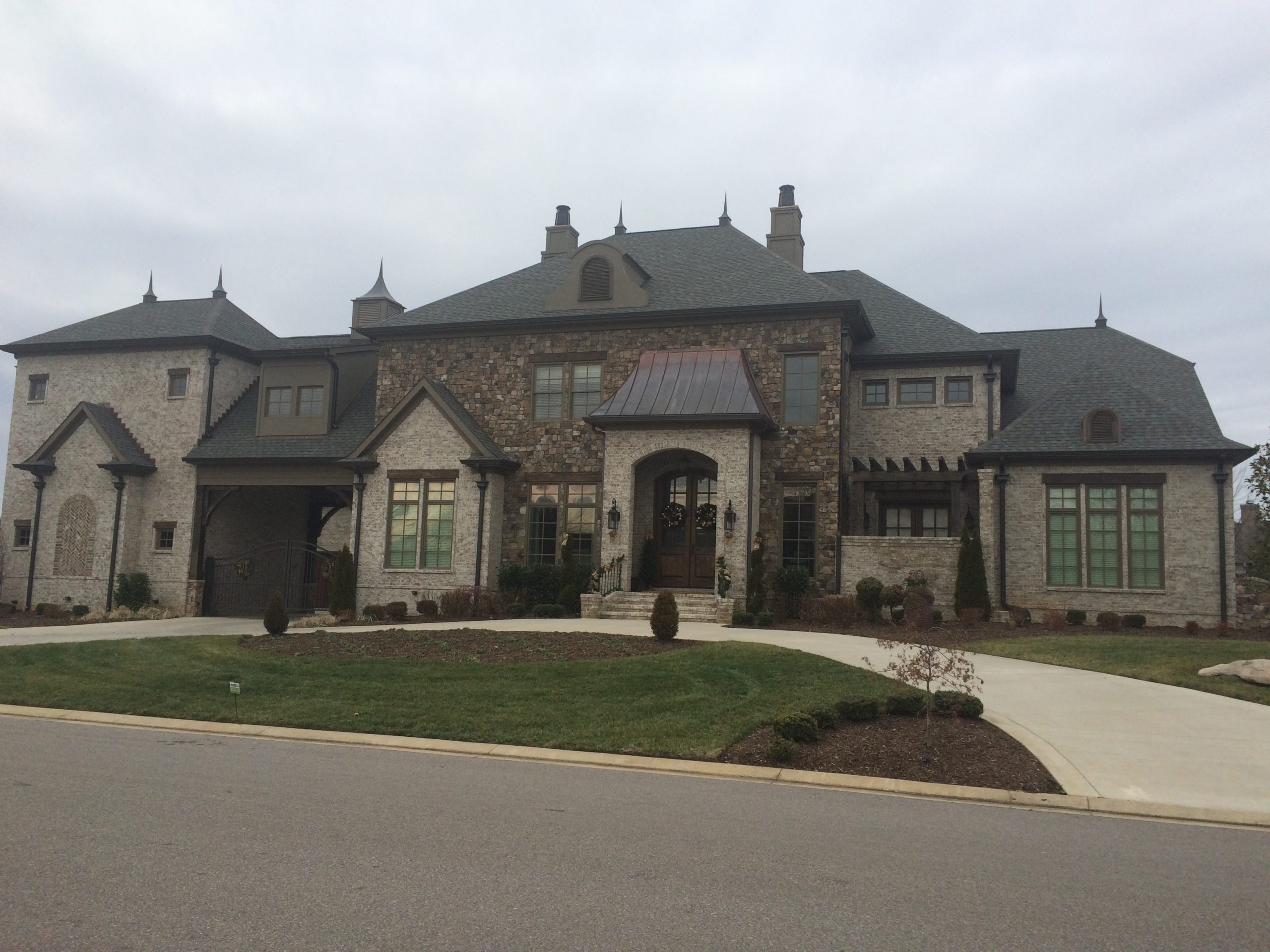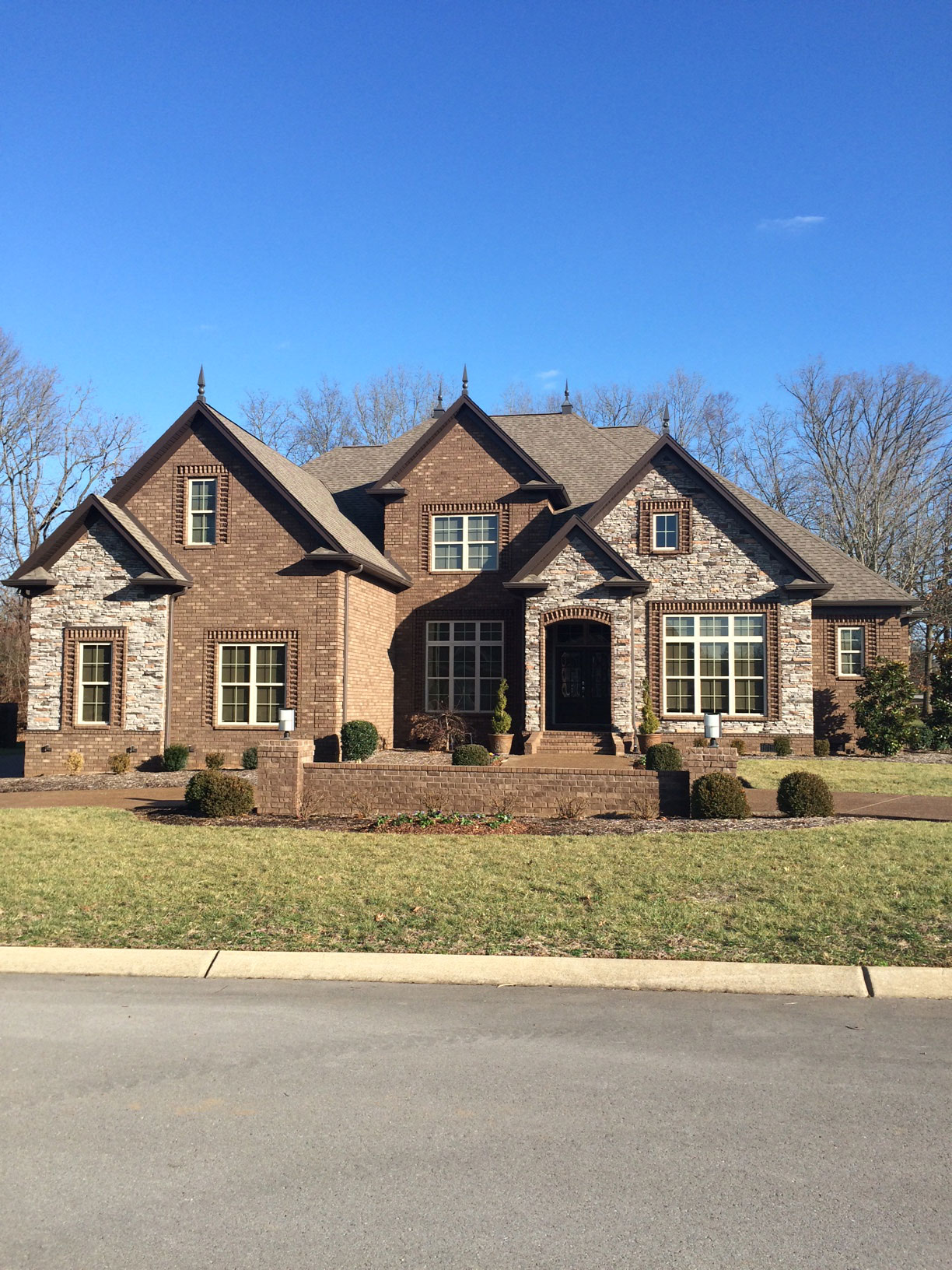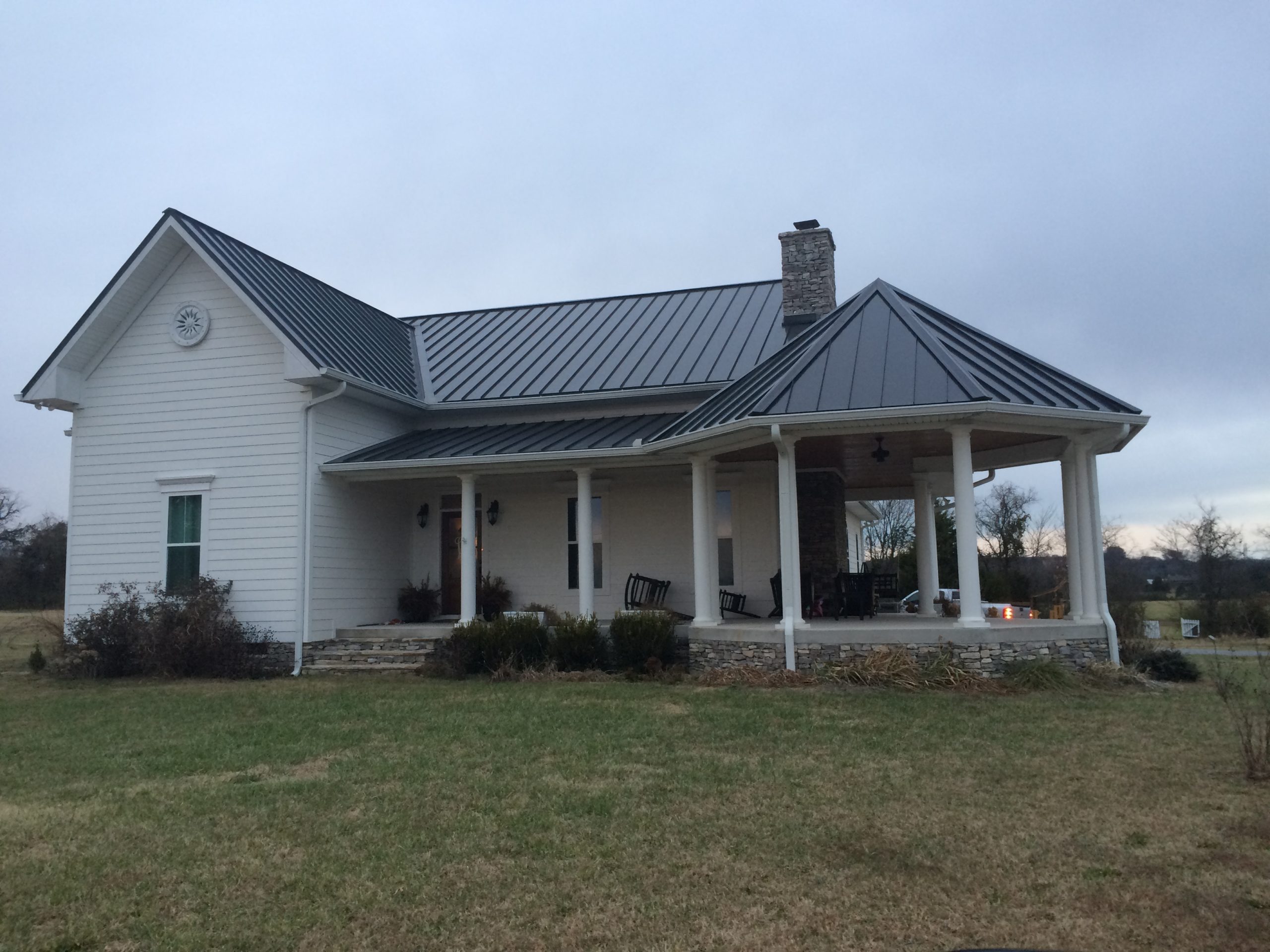Commercial Rubber Roofing Material (EPDM)
What is rubber roofing (EPDM roofing material)?
Rubber roofing, or Ethylene Propylene Diene Monomer (EPDM), is a commercial-grade rubber roofing material perfect for flat or low-sloped roofs.
EPDM is a synthetic rubber made of ethylene and propylene, manufactured with very little energy using oil and natural gas. Plus, rubber roofing products are 100% recyclable, 100% waterproof, and do not pollute rainwater runoff.
Advantages of EPDM
Rubber roofs have been around for over 45 years, and the roofing material comes in black and white, though black is more common.
Black EPDM membranes have carbon black added to convert UV rays into heat, while white EPDM membranes have titanium dioxide added to reflect UV rays. So, buildings in warmer climates benefit from white EPDM roofing materials, while buildings in cooler climates can benefit from black.
Single-ply EPDM roofing material is durable.
Plus, not only are leaks less common, but a rubber roof is fire-resistant and also comes in a sheet. Rubber can slow or even stop a fire from growing and spreading.
Fast, Easy Installation
Cost-effective Repairs
Durable
Energy Efficient
Long-lasting
Great for Flat or Low-sloped Roofs
EPDM Roofing Installation in Tennessee
Rubber roofs are known for their easy installation and lower labor costs.
When we at Austermiller Inc. install commercial rubber roofing material, we first remove and clean off existing roofing materials.
Next, we roll the rubber roofing material (EPDM roofing membrane) out in a uniform pattern. To apply the adhesive, we fold the rubber sheet over itself. It’s important to apply it slowly and spread it evenly to ensure a proper seal. At this point, your Austermiller roofing contractor may use a push broom to smooth out the adhesive and any wrinkles or bubbles.
We will repeat these steps until the whole roof is finished. No welding is required!
With proper installation from us, your EPDM rubber roof can last up to 50 years. Though, you may need minor repairs after 20 to 35 years. Thankfully, the flexible rubber material is simple and easy to repair, only requiring a few tools.
However, it’s important to note that the longevity of your EPDM roof can be significantly affected by several factors. Climate plays a crucial role—extreme weather conditions, such as catastrophic hail or wind damage, can impact the lifespan. The quality of installation is also paramount; a poorly installed roof may not reach its full potential lifespan.
To ensure there are no leaks and the material fits snugly around vent pipes and other features, hire an Austermiller roofing professional, your reliable roofing company in Tennessee. Hiring a professional like us may cost more money upfront, but proper, high-quality installation will save you more money in the end.
To start your next roofing project, contact us at Austermiller for a quote!
Commercial Rubber Roof FAQ
How Do EPDM Roofing Systems Perform in Severe Weather Conditions?
EPDM roofing systems are engineered to excel in harsh weather conditions. Their robust construction features a fully adhered vapor barrier, enhancing their ability to resist severe elements.
- Durable Materials: The use of fiberglass and polyethylene reinforcements in EPDM roofs ensures that they remain intact and functional even during extreme weather such as high winds and hailstorms.
- Wind Resistance: These roofs are designed to stay secure under intense wind gusts, preventing uplift and maintaining their integrity.
- Hail Protection: The reinforced materials help the roofing system withstand the impact of hail, reducing the risk of damage and leaks.
With their exceptional design and materials, EPDM roofing systems provide reliable and durable protection against a variety of severe weather conditions.
How Long Can EPDM Roofing Last in Various Climates?
An EPDM rubber roof properly installed by a professional like Austermiller, Inc. can last up to 50 years. Though, minor repairs may be needed after 20 to 35 years. A regular roof inspection by a professional roofer can identify any signs of compromises in the membrane, like tears, cracks, and separating seams, letting you know if and when repairs are needed.
However, the actual lifespan of your EPDM roof can be significantly influenced by several factors. Climate plays a crucial role—extreme weather conditions such as intense heat, heavy snowfall, or high winds can shorten the roof’s life.
Additionally, attic ventilation and insulation are critical. Proper ventilation helps regulate temperature and moisture levels, preventing damage over time. High-quality insulation can also extend the roof’s durability by reducing thermal stress.
Lastly, the quality of installation cannot be overstated. A poorly installed roof is far more likely to suffer from leaks and other issues, decreasing its overall lifespan. Therefore, ensuring a professional and meticulous installation is key to maximizing the longevity of your EPDM rubber roof.
How Do You Choose the Right EPDM Flat Roof System?
Selecting the ideal EPDM flat roof system can feel overwhelming, but knowing the key factors to consider simplifies the process. Here’s a guide to help you make an informed decision:
1. Assess your Roofing Requirements
Start by evaluating your specific needs. Consider:
- Building Type: Whether it’s a residential, commercial, or industrial building.
- Climate: EPDM is known for its resilience in various weather conditions, but some systems may offer additional benefits for extreme climates.
- Roof Size and Slope: Ensure the EPDM system you choose is compatible with your roof’s dimensions and pitch.
2. Evaluate Material Thickness
EPDM roofing membranes come in different thicknesses, typically ranging from 45 mils to 90 mils. Thicker membranes:
- Offer increased durability and puncture resistance.
- Are ideal for areas prone to harsh weather or heavy foot traffic.
- Usually come with longer warranties.
3. Understand Installation Methods
EPDM can be installed using several methods:
- Fully Adhered: The membrane is glued to the substrate for a more secure and aesthetically pleasing finish.
- Mechanically Attached: Fasteners and plates hold the membrane in place, making it suitable for high-wind zones.
- Ballasted: The membrane is held down by gravel or pavers, which is a faster and often more cost-effective solution but adds weight to the roof structure.
4. Consult with Professionals
Finally, one of the most critical steps is to consult with experienced roofing contractors, like Austermiller. We can provide:
- Expert assessments of your roof’s condition and specific needs.
- Recommendations for the best EPDM system based on your situation.
- Professional installation to ensure long-term performance.
What Factors Should I Consider When Choosing the Color of an EPDM Membrane?
Climate and Temperature
One of the most critical considerations is the local climate. Dark-colored EPDM membranes tend to absorb more heat, making them less suitable for regions with high temperatures. Conversely, lighter colors like white are more reflective and can help keep buildings cooler, reducing air conditioning costs.
Energy Efficiency
The choice of color can significantly impact energy efficiency. Buildings in warmer climates benefit from light-colored membranes that reflect solar radiation, lowering cooling bills. In colder regions, dark-colored membranes can be advantageous as they absorb and retain heat, potentially reducing heating costs.
Building Usage
Consider the building’s function. Warehouses and industrial facilities with large, unoccupied spaces might prioritize energy savings differently compared to office buildings where occupant comfort is crucial. In such cases, the color of the membrane can be strategically chosen to match the specific heating and cooling needs of the building.
Environmental Impact
Reflective roofing materials can contribute to a reduction in the urban heat island effect, making light-colored EPDM membranes a more environmentally friendly choice in densely populated cities.
Aesthetic Preferences
While functionality is key, don’t overlook aesthetics. The color of your roofing membrane should align with the overall design and color scheme of the building to maintain visual coherence.
By taking these factors into account—climate, energy efficiency, building usage, environmental impact, and aesthetics—you can make an informed decision on the best color for your EPDM membrane.
How Can EPDM Roofing Help Reduce Heating and Cooling Costs?
Regardless of whether your region is cold or warm, there’s a good chance that an EPDM flat roof system can help lower heating and cooling costs. Warmer climates will benefit the most from white EPDM roofing, due to its reflective properties from titanium dioxide, which help to reduce cooling costs significantly. On the other hand, buildings in colder regions can opt for black EPDM membranes. Made with carbon black, the black membranes absorb heat, which can help to lower heating costs during the colder months.
Additionally, your energy usage patterns inside the building might influence the choice of membrane color. For example, if your building requires substantial cooling, white EPDM might be more advantageous. Conversely, if heating is a major concern, black EPDM could be the better option. This versatility makes EPDM roofing an excellent choice for diverse climates and varying energy needs.
How Does the Thickness of EPDM Roofing Affect Its Durability?
How Does the Thickness of EPDM Roofing Affect Its Durability?
The thickness of EPDM (Ethylene Propylene Diene Monomer) roofing plays a crucial role in its overall durability and effectiveness. Thicker EPDM membranes offer enhanced resistance to damage, which is particularly important in areas prone to extreme weather conditions like high winds and flying debris.
Key Benefits of Thicker EPDM Roofing:
-
Increased Protection: A thicker EPDM layer provides superior protection against punctures and tears, ensuring that the roofing system remains intact even during severe storms.
-
Longevity: Thicker materials generally have a longer lifespan, reducing the need for frequent repairs or replacements.
-
Enhanced Weather Resistance: Thicker EPDM membranes are better at withstanding UV radiation, temperature fluctuations, and moisture infiltration, all of which contribute to the roofing material’s longevity.
When to Consider Thicker EPDM Roofing:
-
High-Risk Zones: If your property is located in an area with frequent severe weather, opting for a thicker EPDM membrane can greatly improve the roof’s resilience.
-
Commercial Buildings: For industrial or commercial buildings, where the roof surface is exposed to heavy foot traffic or equipment installation, a thicker membrane is advisable.
In summary, selecting an appropriate thickness for your EPDM roofing is essential for optimizing its durability and ensuring long-term protection for your property.
Certifications and Affiliations


















What Our Customers Say
Get In Touch
MAIN Office
9485 Lebanon Rd
Mt Juliet, TN 37122

















